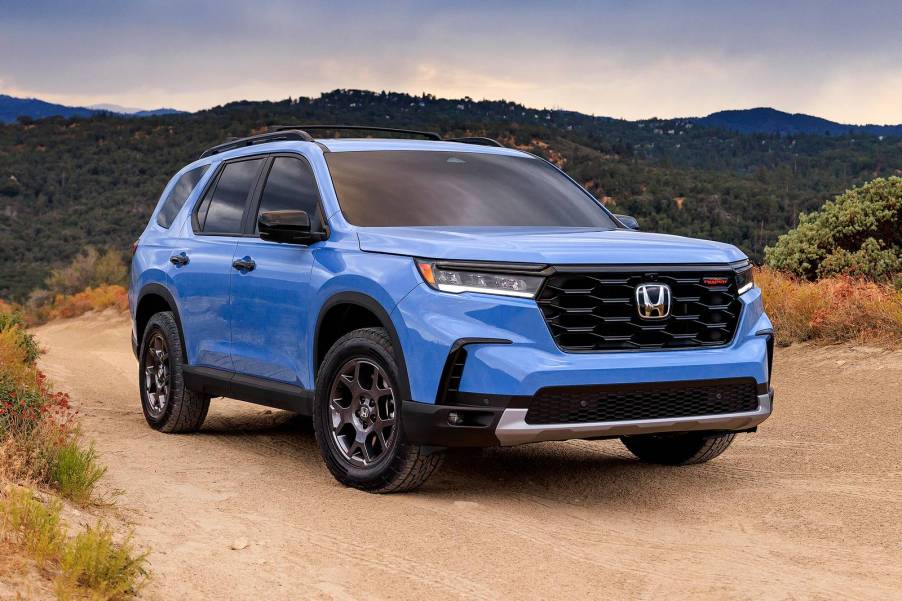
The Honda Pilot Took a Tumble in Safety Ratings
For the most part, the Honda Pilot is new and improved. But recently, it was put through standard safety testing and failed to live up to expectations. Check out how safe the 2023 Honda Pilot really is for families. It still may need rear passenger safety improvements.
Updated since 2023 Honda Pilot safety ratings have been released.
How safe is the 2023 Honda Pilot?

Reportedly, Honda designed the 2023 Honda Pilot to receive an Insurance Institute of Highway Safety (IIHS) Top Safety Pick+ award and a five-star rating from the National Highway Traffic Safety Administration (NHTSA). It did earn these achievements.
The IIHS updated the moderate overlap front crash test to include a crash test dummy in the second row, positioned behind the driver. It represents a 12-year-old child or small woman.
This update shows that midsize SUVs, like the 2023 Pilot, provide excellent protection for the driver that do not extend to the rear.
Fatal injuries are 46% higher for belted passengers in the rear compared to the front row. This isn’t because rear seats are getting more dangerous but because safety technologies have only been focused on improving protection in the front.
The 2-23 Pilot earned a Poor rating for its ability to protect rear passengers during the test. Based on the results, the dummy indicated that rear-seat passengers have a higher risk of head, neck, and chest injuries.
What are the 2023 Pilot standard safety features?
Standard safety features for the 2023 Honda Pilot include adaptive cruise control, automatic emergency braking, lane-keeping assistance, and driver attention warning. These options are bundled in the Honda Sensing group.
The emergency braking feature includes pedestrian detection with traffic sign recognition. You also get full airbag coverage with front-passenger knee protection and three-row
However, the Pilot seems to be a little lacking. Rivals include more standard features such as blind-spot warning, rear-cross traffic alert, lane-departure warning, and forward collision warning.
Rear automatic emergency braking, blind-spot warning, parking sensors, and the 360-degree camera display are limited to higher trim levels.
Is the Pilot dangerous for families?

No, the Honda Pilot isn’t a dangerous SUV. It just doesn’t provide as much protection in the rear seat as other vehicles. During testing, the rear seat dummy’s head maintained a safe distance from the back of the front seat.
The seatbelt reminders earned a Poor rating due to the long initiation time, not being loud enough, and not lasting long enough. So, tell your kids to buckle up!
Also, the child seat anchors got an Acceptable score because the tethers are in a hard-to-find location and can be difficult to maneuver around other equipment. It might be easy to confuse the anchors with different hardware.
But it has ‘Good’ ratings for its safety cage, structure, and roof strength. It was also able to avoid collisions with other vehicles at 12 mph. During the 25 mpg test, speed was reduced by 12 mph.
The new Pilot still has been updated to meet higher safety standards but still received a poor rating for rear passenger restraints and dummy kinematics.





